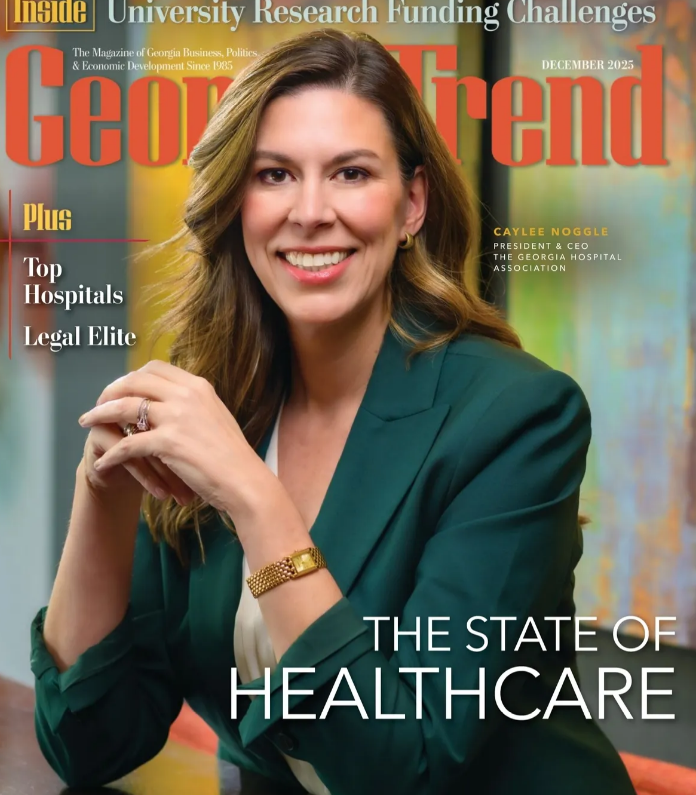Georgia Bio to Present Lifetime Achievement Award Posthumously to Lee Herron
Georgia Bio, the state’s life science trade association, will honor the late Lee Herron, an industry leader and long-time supporter of Georgia Bio, with its Lifetime Achievement Award at next week’s Georgia Life Sciences Summit which celebrates the contributions and achievements of Georgia leaders who have been instrumental in advancing the growth of the life sciences industry and elevating Georgia’s overall ecosystem. In its 35-year history, Georgia Bio has only ever presented five Lifetime Achievement awards.
Lee, who will long be remembered as a pillar and irreplaceable leader in the industry, retired from the Georgia Research Alliance (GRA) in the spring of 2024 after a 16-year career with the Alliance, most recently, Lee led GRA’s agricultural technology programs including the Greater Yield initiative. He directed its award-winning venture development program for 15 years, which helped to launch 200+ university-based companies that attracted more than $2 billion in equity investment. A seasoned executive, Lee harnessed his 20 years of entrepreneurial experience to help startups develop sound business strategies. Lee served in many community leadership capacities, including board positions for Georgia Bio and Southeast Life Sciences, the Global Center for Medical Innovation’s Industry Advisory Board, the Biolocity Oversight Committee, and the NSF Center for Cell Manufacturing Technology’s Commercialization Advisory Board.
“Lee was a true visionary whose passion and integrity touched everyone he met," says Georgia Bio President and CEO, Maria Thacker-Goethe. “His unwavering commitment to innovation and his profound impact on the life sciences industry will be felt for generations to come. We are honored to present him with this award posthumously.”
“The Georgia Research Alliance would not be what it is today without Lee Herron,” says GRA President and CEO Tim Denning, PhD. “Lee helped shape our program that moves university inventions to the marketplace — a program that he led and grew for 16 years. Countless technologies are at work in the world today, benefiting companies and consumers alike, because of Lee’s wisdom, guidance, and desire to make a difference.”
Prior to joining GRA, Lee managed the biosciences division of Georgia Tech’s Advanced Technology Development Center (ATDC) and founded four biosciences companies: SeaLite Sciences Inc., Biopool International Inc., CytRx Corporation, and Theragenics Corporation. Herron received a Doctor of Veterinary Medicine degree from the University of Georgia and completed an internship at Cornell University. He also studied experimental pathology at Emory University.
Lee passed away on July 12, 2024, after a long battle with cancer. He was a devout family man, husband to Rita Herron for 50 years, father to three children, and grandfather to eight children. He leaves behind a profound legacy and will be remembered by his friends and colleagues as a dear friend.
Award Presentation
Georgia Bio will honor Lee at the opening reception for the organization’s largest annual gathering, the Georgia Life Sciences Summit, taking place on October 21 at the Sandy Springs Performing Arts Center from 5:00pm to 7:00pm.
# # #
About Georgia Bio
Georgia Bio (GaBio) is the state’s most impactful life sciences membership organization, advocating for the sector and its diverse innovation pipeline. For over 30 years, GaBio has served its members by supporting companies of all sizes, from early-stage innovators and startups to established industry leaders in biotechnology, pharmaceuticals, and medical technology. GaBio also works closely with universities, academic and research institutions, the investment community, and other critical partners that promote this vibrant sector. GaBio works to shape public policy, improve access to breakthrough technologies, educate lawmakers, provide member programs, strengthens the workforce pipeline, and advance equity within our ecosystem by championing innovative solutions for some of the most pressing challenges of our times. For more information, visit www.gabio.org.
MEDIA CONTACT:
Melissa Carter
404-920-2043
mcarter@gabio.org




